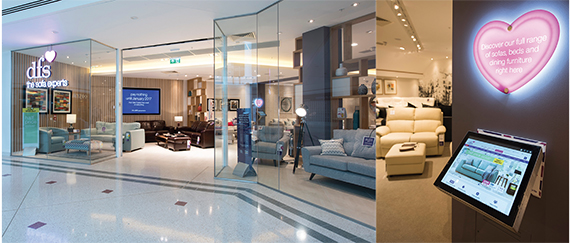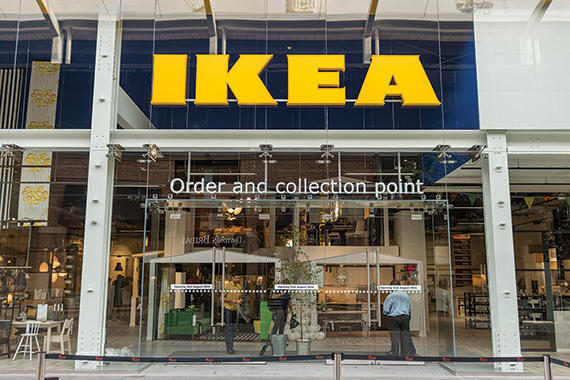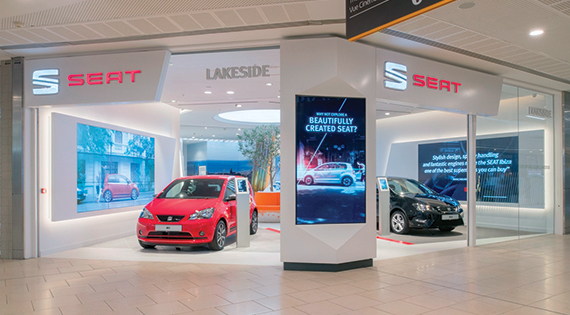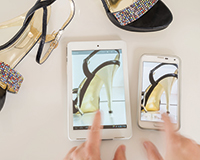 Predictions that online sales would spell the end of physical retail seem to have been unfounded – out-of-town giants are now opening smaller central stores to give customers first-hand experiences. Michelle Perry reports
Predictions that online sales would spell the end of physical retail seem to have been unfounded – out-of-town giants are now opening smaller central stores to give customers first-hand experiences. Michelle Perry reports
Could it be that technology is actually boosting demand for physical retail space? Whereas once it was suggested that the internet would provide all our consumer needs, what transpires is that consumers are tactile creatures of habit who still like to go out to touch, feel and experience shopping first-hand.
Step forward, the omnichannel retail revolution. What this means for in-town shopping centres is a fresh injection of new occupiers and shoppers.
Over the past 18 months, growing numbers of in-town shopping centres – almost all in London – have leased space to occupiers such as IKEA, SEAT, DFS and Tesla. Typically, these are retailers that occupy large, out-of-town retail spaces where shoppers can test their bulkier products and sample their huge ranges. But the boundaries are blurring due to advanced digital technologies, more granular data, changing consumer behaviours, access to market and, of course, the internet.
“Now it’s about how retailers perceive the entire UK market,” says Paul Marshall, head of shopping centre leasing at JLL. “A lot of retailers, in terms of accessing the major metropolitan cities, are having to look at their brands and tailor them to different consumer generations. The traditional view of in-town and out-of-town has to be turned on its head.”
Most agree that the movement into town by some retailers is not happening in isolation and is the beginning of a growing trend for occupiers to access new markets and raise brand
awareness in big cities.
“What we are seeing is new occupiers moving into shopping centres, such as car manufacturer Tesla, but also DFS, and we are seeing more of it,” says Nick Hilton, partner, retail property management, at Workman. “It might be the start of a trend. Retailers will go where the customers are, so a lot of retailers now have different fit-outs for different locations.”
Technology has played a significant role in the way retailers are targeting consumers and adapting their offering. The popularity of smaller format stores such as the one IKEA has opened in Westfield Stratford allows shoppers to browse goods using digital technologies and buy either at the larger warehouses, online or in the smaller store.
 “The driver of structural change in the market is driven by technology,” says Ed Cooke, chief executive of Revo, formerly the British Council of Shopping Centres. “People are using physical stores to test goods, touching and feeling and experiencing them, and then having them delivered either to their house or the store after ordering online.”
“The driver of structural change in the market is driven by technology,” says Ed Cooke, chief executive of Revo, formerly the British Council of Shopping Centres. “People are using physical stores to test goods, touching and feeling and experiencing them, and then having them delivered either to their house or the store after ordering online.”
IKEA’s click and collect stores were designed as studios to plan and order more complex purchases such as kitchens, wardrobes and sofas. With the store closer to the consumer, they can make more frequent repeat visits than they would an out-of-town warehouse, which can be an hour’s drive for many shoppers.
“We are working with schemes where click and collect lockers are being built into the design of the redevelopment or new build of commercial buildings in-town and out-of-town,” Hilton says.
Of big bulk items such as sofas and cars, Rebecca Ryman, regional director at intu, which has leased space to SEAT and DFS in recent months, says: “There aren’t that many homeware and car retailers in shopping centres, but now they want to get to their key consumer decision-makers.
“The technology revolution for those kinds of operators is changing their idea of using space,” Ryman says.
For retailers, it shows their flexibility to evolve and engage with customers by meeting their needs through technological advances. Retailers and landlords are also collaborating more than the industry has ever seen before to improve dwell time and footfall as well as spend.
“There is a lot more sharing of customer insights between shopping centres and retailers,” says Cooke. “It allows them to better understand the consumer market and adapt their space to work better.”
Property and retail experts suggest the trend is here to stay.
“These are not short-term fillers. They are doing proper lease terms and paying commercial rents,” says Ed Jenkins, fund manager, Standard Life Real Estate, whose shopping centres in Crawley and Brent Cross have leased space to DFS and Tesla respectively.
For intu, lease lengths for new occupiers are the same as traditional occupiers, which tend to range from five to 10 years. IKEA signed a 10-year lease with intu for its Lakeside store.
For the landlords, there appear to be few downsides. New occupiers boost visitor numbers and possibly new types of consumers, which is beneficial to existing occupiers, too. It also means fewer vacancies, which is always an advantage for landlords. Investment in fit-outs and technology raises the bar for other more traditional occupiers to invest too, which ensures shopping centres are in regular modernisation.
“Landlords are more flexible with lease terms that might give confidence to retailers that want to try something new,” Hilton says.
For retailers, the benefits are clear, too. Occupying an in-town space – as well as online and out-of-town – extends brand exposure by reaching greater consumer markets where they can showcase their products more frequently.
The change is also about retailers achieving a better understanding of shopping habits. This could be what is driving car dealerships into shopping centres. At intu Lakeside, 72% of shoppers are women and as many as three-quarters of all car purchases are made by women. In fact, the vast majority of big purchases are driven by women.
“It was believed that technology was a threat to shops. But it is a symbiotic relationship between the two,” Cooke says. “It is the smart retailers and property owners that understand that, and the best are gaining value through footfall and experience.”
Just as video didn’t kill the radio star, online shopping may not harm physical shops.
 New pretenders
New pretenders
Spanish car manufacturer SEAT leased its first smaller format store at intu’s Lakeside in September. The space combines a showroom for two or three cars and digital technology to raise brand awareness among Lakeside’s 26m annual customers. Shoppers can take SEAT cars for an unaccompanied test drive as well as have them serviced while they shop, and collect their brand new car from Lakeside, too.
If they wish, customers can buy a car in the store without any human contact using only the in-store technology.
SEAT has no plans as yet to open another smaller format store. But, the company says, if the trial proves successful, it would be most likely to open a second store in London, given the size of the consumer market.
Earlier this year, DFS opened its second smaller format store in intu Bromley. The store is a tenth of the size of its typical out-of-town format and is aimed at capitalising on the greater footfall in the capital.
SEAT is piloting the smaller format stores after having opened its first store in Westfield Stratford in March last year. The retailer uses new technologies so consumers can see all the ranges on big screens in store, as well as having a collection of sofas in store.











